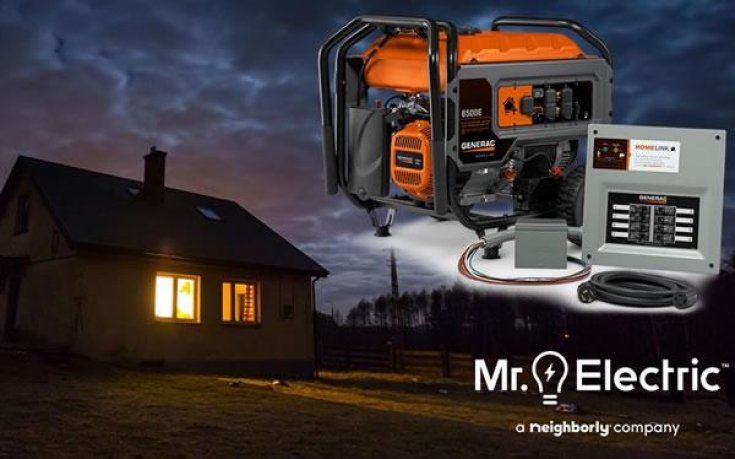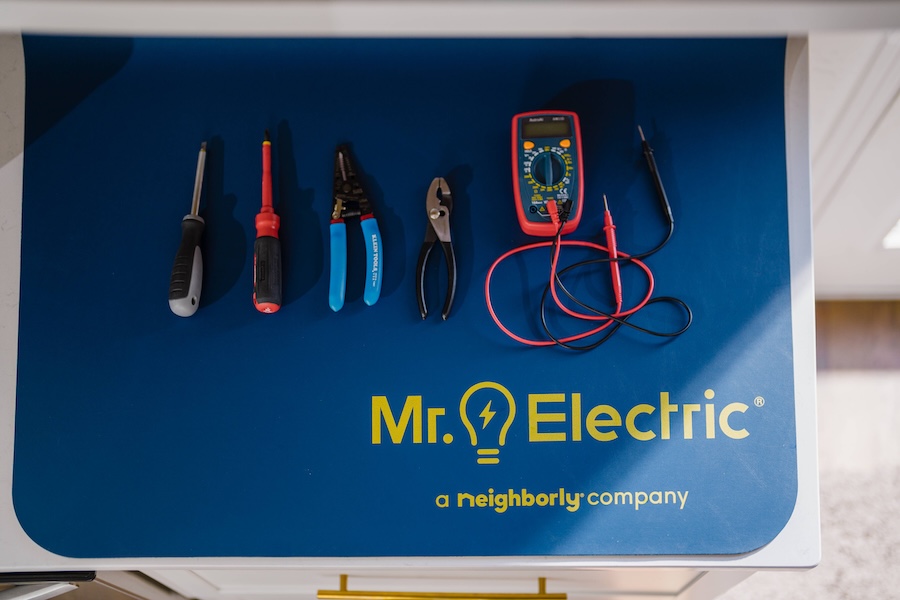
24-Hour Emergency Electricians in Fort Worth, TX
Call this Saturday to Get 10% OFF
Need an electrician?
Schedule NowRequest Electrical Service Now
817-585-299324-Hour Emergency Electricians in Fort Worth, TX
Call this Saturday to Get 10% OFF
Need an electrician?
Schedule NowRequest Electrical Service Now
817-585-2993
A light flickers, a breaker buzzes, a circuit trips, and you have no idea what's going on. This is a nightmare for any property owner who wants control. For homeowners and property managers alike, understanding even the basics of your electrical system can be a lifesaver.
While you may not need to know the difference between single-phase and three-phase power, you should know the difference between watts and amps. Knowing how they differ can help you make better decisions about energy use, prevent electrical overloads, and spot red flags before they become serious hazards.
This is exactly what we'll break down in this brief article brought to you by Mr. Electric. If you'd rather consult a certified electrician, then call or message Mr. Electric to get in touch with a member of our team.
Think of electricity like water flowing through a pipe. In this analogy, amps (amperes) represent the volume of water moving through the pipe at a given time. In electrical terms, an amp is a unit that measures the amount of electrical current flowing through a circuit.
The higher the amperage, the more current is flowing. When that flow becomes too much for a wire or circuit to handle, things can get dangerous - and fast. Overloaded circuits are a leading cause of electrical fires and system failures.
Now, let’s talk about watts, which measure electrical power. Watts are essentially how much energy a device consumes or produces. If amps are how much electricity is flowing, watts are how much work is being done with that flow.
That means a 120-volt outlet powering a device that draws 5 amps is using 600 watts of power. So, when your space heater says it uses 1,500 watts, it’s drawing about 12.5 amps on a 120-volt circuit. Suddenly, it becomes clear why plugging in that heater, a toaster, and a microwave on the same circuit causes it to trip.
To be clear, watts and amps work together. You can’t have one without the other. But knowing the difference helps you understand why your devices behave the way they do
Let’s say you’re upgrading your office or renovating a rental property. You’re adding lighting, a few appliances, and maybe a home theater setup or a new HVAC unit. Every device adds to your home or building’s total electrical load. And unless you’ve planned that load correctly, you’re setting yourself up for headaches and hazards.
Understanding how many watts your system can support and how many amps each circuit can handle is crucial. That’s where a certified electrician in Keller, TX becomes not just helpful, but essential. They don't just install wires; they calculate loads, assess capacity, and make sure that your system is safe, efficient, and code-compliant.
Wattage and amps are most important when there are multiple devices or appliances at play. Running a microwave, dishwasher, and air conditioner on the same circuit, for instance, can exceed the amperage limit and cause repeated tripping.
Similarly, plugging multiple appliances into one long extension cord is a bad idea. Why? If the combined amperage exceeds the cord’s rating, it can overheat and even spark a fire. This is why it is always advisable to consult an experienced electrician before installing large equipment or appliances into a crowded circuit.
Some things in life are fine to estimate. Your grocery budget? Sure. The number of guests at your next BBQ? Why not. When it comes to your electrical system, however, guesswork can be dangerous. Trying to size a circuit or wire without understanding how amps and watts relate is like playing a game of electrical roulette.
At Mr. Electric, we've seen everything from overstuffed breaker panels and mystery circuits to sketchy DIY wiring. We understand the risks, and this is why we provide affordable and accessible electrical service for our community. We're just a call away when you need a hand.